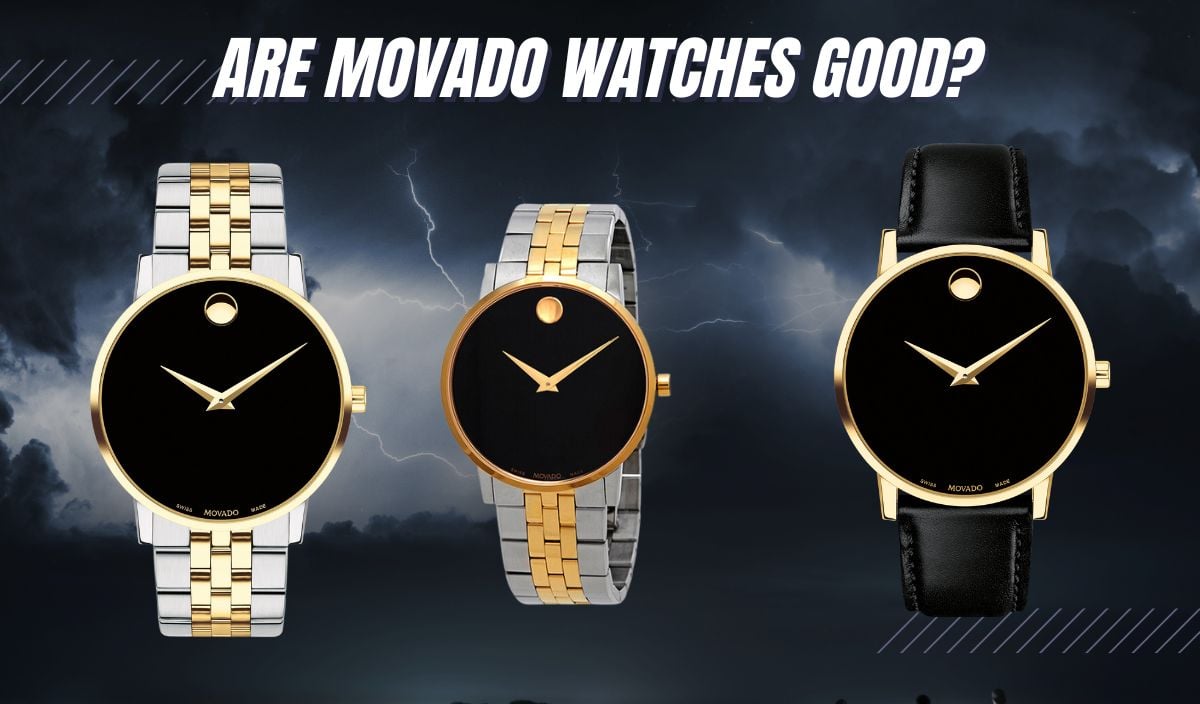
Are Movado Watches Good? (EVERYTHING You Should Know)
Movado. You’ve likely heard the name before and might’ve even found this article hoping to learn more about the brand and whether its watches are good. For others, you may even already own one. Maybe it was your first real watch or one earned at graduation.
Whatever the case, we’ll be exploring Movado as a whole in this article, navigating key points in history, and identifying objective ways in which to measure the brand’s qualities, strengths, and weaknesses. We’ll also discuss some of the prominent models in the catalog and even provide brand alternatives should you decide it’s not the brand for you. Let’s jump in.
About Movado Watches
Movado represents a global brand with its presence reaching Europe, Asia, and the Americas. While initially based in heritage and traditional Swiss watchmaking in its early years, the Movado of today has branched into varied product categories ranging from analog watches (quartz and automatic) to jewelry, sunglasses, and even smart watches of late.
In this sense, the brand can be seen as more of a fashion brand with a focus on timepieces, and it’s through this lens of focus that’s best to analyze the pros and cons of the brand’s strengths, weaknesses, and its overall product offerings, mainly through a watch enthusiast’s eye. Indeed, for the mass market, Movado has come to represent a certain standard of Swiss watchmaking and can be frequently found in malls and department stores alongside other watches, such as Michael Kors, Tommy Hilfiger, and Shinola. How did it earn this reputation?
The History of Movado
Movado has a long and storied history. The company was founded in 1881 by Achilles Ditesheim, a young watchmaker who opened a small workshop in the town of La Chaux-de-Fonds. In 1905, Ditesheim renamed his company Movado, which means “always in motion” in the artificial language Esperanto.
Movado quickly became a leading watchmaking brand in Switzerland. Yet, it was in 1947 that the brand produced a watch that would come to represent a core component of its ethos and design language moving forward. Enter– the iconic Museum Dial.
Created by artist Nathan George Horwitt, this groundbreaking dial design featured a stark, minimalist face with a solitary dot at 12 o’clock, symbolizing the sun at its zenith. The Museum Dial captured the essence of modernism and quickly garnered acclaim for its unique blend of sophistication and simplicity.
Today, it remains one of the most recognizable watch dials in the world and, certainly, the watch most associated with Movado. So iconic that it was inducted into the permanent collection of the MoMA (Museum of Modern Art) in New York City in 1960, and the reason it’s called the “Museum” watch.
But let’s not sleep on Movado’s historical technical chops, either. As a brand, Movado has historically pushed the boundaries of innovation, embracing new technologies and materials to enhance the functionality and aesthetic appeal of its timepieces.
In the 1950s, the brand introduced the Calendomatic, a revolutionary self-winding watch that incorporated a day and date display—an impressive feat at the time. Movado continued to innovate with advancements like the Datron (in partnership with Zenith), one of the first automatic chronographs, and the Vizio, a fusion of digital and analog technology in their more modern catalog.
Are Movado Watches Good?
Let’s be clear. All wristwatches are a luxury because we no longer need them in modern society. We’re surrounded by time in various forms throughout our daily lives, whether on the screen of our cell phones or on our laptops and computer screens just a quick glance away.
In this light, wristwatches are then a subjective choice based on aesthetics and the things we value (for example: design, residual value, and so forth). But there are a few areas where we can make objective decisions based on fact. Let’s examine this within the context of our main question: are Movado watches good?
Overpriced Timepieces
Taking the Museum Classic as an example, one could expect to spend between $600 to $2,000 at full retail price to take home the brand’s most iconic design (with Swiss quartz and automatic movements available). Exploring other lines within the brand, a Vizio would land you in the range of $1,295 to $2,495, with another line yet in the Alta reaching into the near $4000 range for an automatic Swiss chronograph movement.
For certain watch collectors who place importance on mechanical movements, or those familiar with the competitive landscape within each price point, it can be argued that what Movado is presenting may be overpriced.
That’s because of the brand’s dependence on mass-produced quartz movements in the $1000 range and the availability of true luxury watches from brands in the higher price range.
There’s nothing wrong with the practicality and accuracy of quartz for a daily wearer (and for most of the general mass market at large). However, using a quartz movement is typically associated with watches well under this price. It implicates lower relative cost to the manufacturer than a mechanical movement, which is more challenging to produce and ensure accuracy.
For this reason, many would agree that Movado watches may be priced a bit aggressively for what’s on offer, especially with competitors in this range offering solid automatic movements and design at similar price points; for example, Hamilton and Tissot.
Additionally, once we break into the $2,000 through $4,000 price range, we’re entering what many would consider a true entry-level “luxury” range. At this price point, you get brands like Longines, Oris, and Tudor, which all carry more weight and respect in the watch industry for their own individual accomplishments.
Little to No Design Innovation
While beauty is in the eye of the beholder, it’s also true that Movado knows what they do well from a design standpoint and, to a certain degree, sticks to it.
Surely, common design language throughout a brand’s range of products is a telltale sign of a brand’s confidence and understanding of its offerings; however, one can’t help but wish they’d deviate just a tad bit from their iconic Museum watch design, with a bit more innovation than what’s currently on offer.
Speaking of the Museum design ethos, looking across the catalog, we see that a majority of their other lines are merely evolutions or variations on that minimalist aesthetic with the sole dot at 12 o’clock: the Bold line, the SE, Modern 47, Artist Series, Face, Bangles, Esperanza, etc. all pull from the same Museum design.
The few watches that don’t tend to be generic fashion watch designs that pull from other popular models across the industry. There’s certainly nothing wrong with providing a base level of popular design; however, we know that, historically, Movado can be a powerhouse in new design should they choose to focus on it.
Significant Value Depreciation
A Museum Class Automatic in 40mm and Yellow Gold PVD has a full list price of $1,295. A quick search for completed sold listings of the same model in new condition on eBay shows that the price being paid on the secondary market is within the $250 to $300 range.
If you have no intention of selling the watch, secondary market values are likely of little concern. However, this does go to show that the brand suffers significant value depreciation after purchase.
A prospective buyer would do well to find the best-discounted price available to them, whether from an official retailer or on the secondary market, in order to mitigate this depreciation. But it’s not all doom and gloom, and none of the above may deter you. So what are some reasons you might still want to buy a Movado watch?
Historic Watch Brand
Founded in 1881 and a survivor of the quartz crisis in the 1970s, Movado is truly a brand with a strong history within the Swiss watchmaking industry. The Movado group has grown to include brands like EBEL, MVMT, and even licensed brands under fashion labels such as Coach, Hugo Boss, Lacoste, Calvin Klein, and Tommy Hilfiger.
At one point, they even owned Piaget, among the highest haute luxury watches and jewelry makers. Additionally, the Museum watch is truly an icon, since its development in 1947, despite how overused the term may be when talking about watch design (Bauhaus and all). If you appreciate the history, legacy, and design ethos of the brand, do not be deterred.
Several Models To Choose From
With a current catalog spread across eighteen model lines, each model line is made up of a plethora of color, size, material, and movement variants; one is spoiled for choice and likely to find something that catches your eye across Movado’s product range.
Whether you prefer to stick with the tried and true classic Bauhaus-inspired Museum design, prefer the vintage-inspired Heritage series designs, or even prefer to express yourself with the bold color options within the Modern 47 line, there is plenty to choose from.
Quartz variations on leather straps will typically be the most affordable, whereas the more complicated automatic mechanical timepieces on bracelets (steel, two-tone, PVD, etc.) will increase the price.
Want diamond markers on your dial? Also an option! With such a broad range, let’s dive deeper with a look at some more specific collections.
Most Notable Movado Watch Collections
Movado Museum Classic
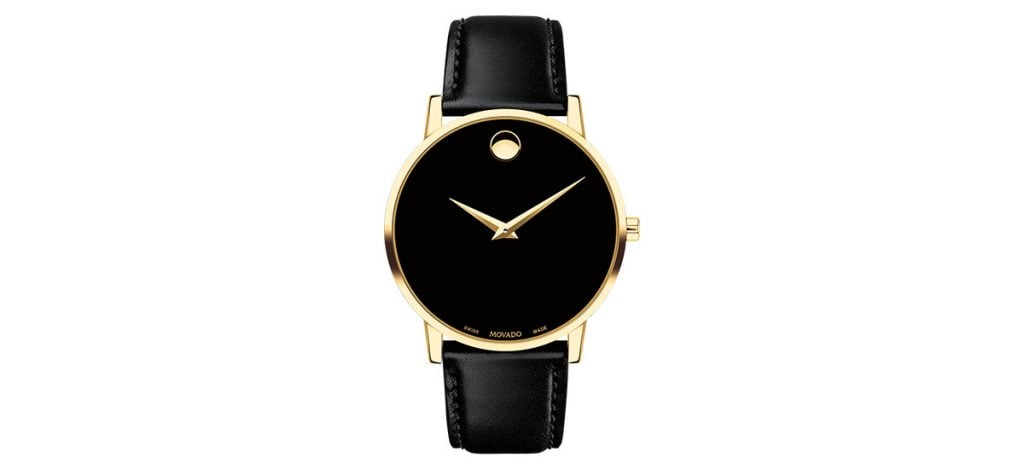
The bread and butter, the core of Movado’s lineup. The Museum Classic is the modern iteration of the infamous Bauhaus-inspired design from Nathan George Horwitt in 1947. Clean, stark (often black) dials adorned with a simple dot motif at 12 o’clock.
The Museum Classic can be purchased in three primary sizes, 28mm, 33mm, and 40mm, with either Swiss quartz or automatic movements. It also comes in various case materials ranging from stainless steel to Yellow or Rose Gold PVD on leather or linked bracelets. Diamond markers or date functionality (with matching date wheels) are the only visual flairs to provide variety, should you choose further complication.
Rated at 30m of water resistance, the Museum Classic is best suited for office or casual smart wear and is most at home in dressier situations. Models range from $595 to $1995.
Movado BOLD
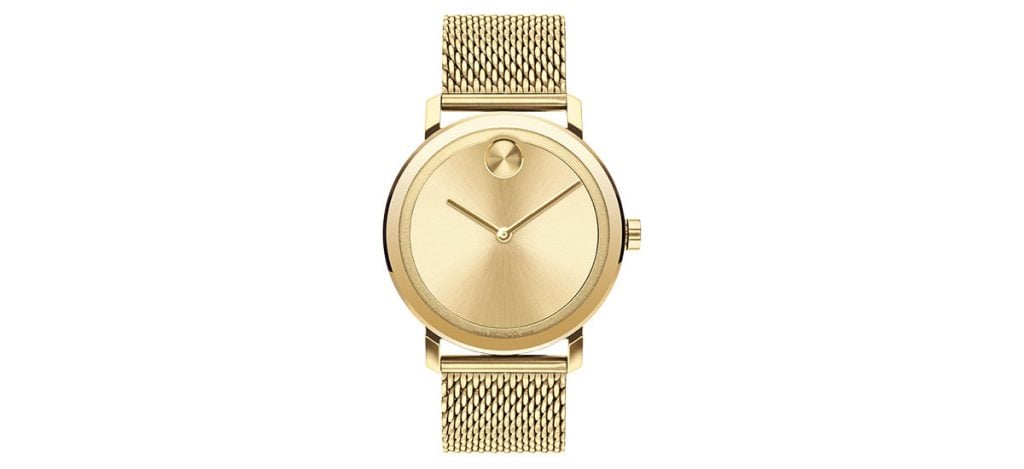
Officially (from Movado promotional material), the Movado BOLD collection “offers a modern, minimalist aesthetic with a confident twist”. In practice, the BOLD collection provides a plethora of more modern leaning designs on existing models in the catalog on everything from the Museum Classic to their sportier complicated chronographs.
With no true throughline across the various models (124 variants in total), perhaps the best way to describe the BOLD collection is in a focused fashion context: Looking for a blacked-out/ion-plated Museum design (BOLD Thin) or a transparent dial with integrated anthracite black rubber strap (BOLD Fusion Automatic)? You’ll find it in the BOLD collection. Models range from $495 to $1495.
Movado Series 800
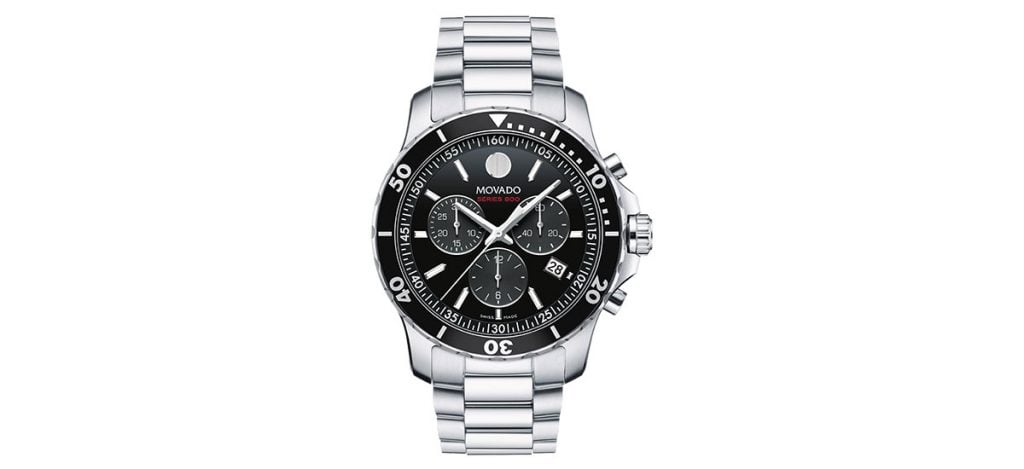
Dive watches represent the best-selling form factor of watch design and function in today’s market. They’re sporty, bold, and altogether practical, ready to take a beating, with water resistance ratings at 200m and more. The Series 800 is Movado’s take on the modern dive watch.
Stylistically, the Series 800 retains the brand’s dot at 12 o’clock but otherwise adopts traditional dive watch design language, which is often Rolex Submariner adjacent. To be fair, it’s hard to break away and make one’s own mark within such specific functional requirements (rotating bezel with minute markers, legible hands, indices, etc.).
However, Movado’s choice to include a 42mm Diver Chronograph variant is admirable. Prices range from $1,195 for 40mm quartz variants to $2,295 for Swiss automatic-powered movements.
Movado Heritage
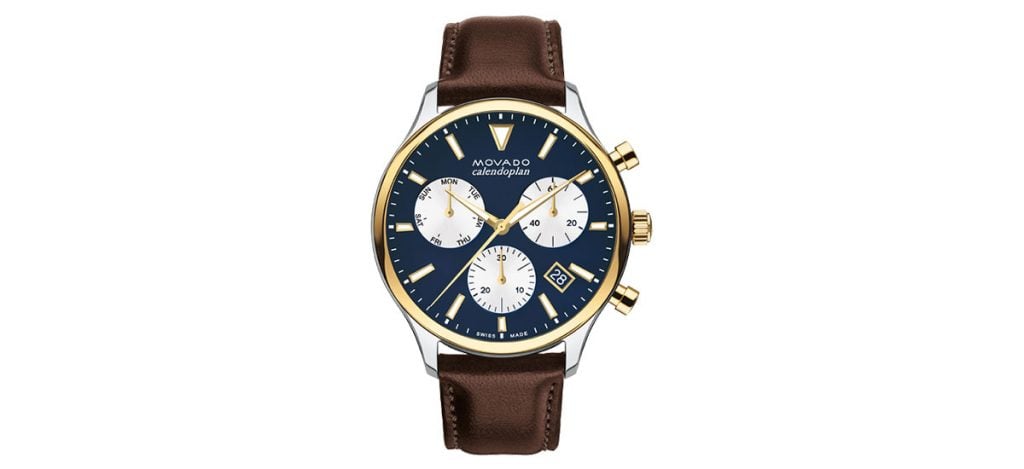
In the last decade, vintage-inspired designs have been at the forefront of the watchmaking landscape. The Heritage line is Movado’s version of this, and likely the line to most interested watch enthusiasts or those seeking more traditional design language from the 50s and 60s but in modern materials and size.
Watches such as the Calendoplan with a sub-seconds hand register at 6:00, Calatrava style. The Alta Super Sub Sea Automatic, recalling Movado’s history with Zenith, to the Calendoplan S, a 43mm upsized skin diver design available on a steel mesh bracelet. Pricing ranges from $595 to $3,995, with Swiss quartz and automatic movements available.
Movado Modern 47
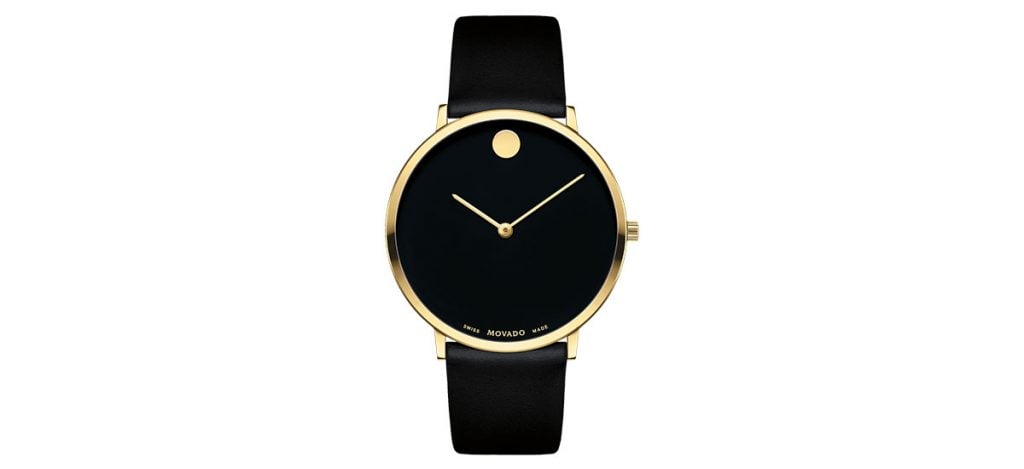
The Modern 47 collection is easy to understand. Take the Museum Classic in 40mm with a quartz movement, but make it colorful. And I mean all the colors. From a playful light pink to Yellow Gold PVD with a white dial, the Modern 47 will set you back $595 to $695 retail, depending on your shade of choice.
Should You Buy a Movado Watch?
If the watches speak to you, far be it from me to tell you otherwise. Certainly, Movado provides a wide range of options in color, design, and function, steeped in the historic design language of the Museum watch.
A Movado watch will be solid, low stress, and reliable (particularly quartz) and often provide that minimum intersection of style and function required by most modern consumers looking for a dedicated daily timepiece fit for all occasions.
At its core, this is the target audience for Movado, and they’ve done well for themselves selling to the general zeitgeist. But what are the alternatives for the more discerning in the same price range?
Alternatives to Movado Watches
Tissot
Tissot is a renowned Swiss watch brand with a rich and illustrious history dating back to 1853. The company was founded by Charles-Félicien Tissot and his son, Charles-Émile Tissot, in the town of Le Locle, Switzerland. From humble beginnings, Tissot quickly gained a reputation for innovation and precision well into the present day.
Today, Tissot watches are highly regarded for their Swiss craftsmanship under the Swatch Group umbrella, precision movements (ex: Powermatic 80, with 80-hour power reserve), and a wide range of styles to suit different tastes and occasions.
From classic designs to sporty chronographs and elegant women’s watches, Tissot offers a diverse collection that appeals to watch enthusiasts worldwide. Watches such as the Gentleman Powermatic 80 and PRX Powermatic 80, in particular at the sub-$1000 mark, are compelling options when weighed against offerings from Movado.
Hamilton
Founded in 1892 in Lancaster, Pennsylvania, Hamilton initially focused on producing high-quality pocket watches. It quickly gained a reputation for precision and reliability, becoming a trusted timekeeping companion for railroad employees, who depended on accurate watches to ensure safe and punctual train schedules.
Present-day Hamilton continues to innovate and create exceptional timepieces that blend American heritage with Swiss precision. The brand offers a diverse range of collections, including sports watches, dress watches, and vintage-inspired timepieces, catering to various tastes and preferences.
They’ve also become a darling to the watch enthusiast community in recent years both for their accessibility and pricing and their penchant for listening to what enthusiasts want. Watches such as the Khaki Field or Murph are often an entry point for collectors for this reason, offering mechanical movements and personality well under the $1,000 price point.
Longines
Founded in Saint-Imier, Switzerland, by Auguste Agassiz in 1832, Longines eventually played a significant role in the development of early sports timing and aviation in the late 19th century into the 20th century. During World War II, Longines shifted its production to support the military, providing reliable timepieces to various armed forces.
The brand’s watches were favored by pilots and navigators due to their accuracy and legibility. In the post-war era, Longines continued to innovate and expand its collection. The brand introduced iconic models such as the Conquest, which showcased Longines’ commitment to timeless design and precision.
In the 1950s and 1960s, Longines experienced a surge in popularity as its timepieces became favored by celebrities, athletes, and watch enthusiasts worldwide. The brand’s watches graced the wrists of notable figures, including Audrey Hepburn and Humphrey Bogart, further enhancing Longines’ reputation for elegance and sophistication.
Today, Longines continues that tradition offering a variety of collections catering to diverse tastes, from traditional dress watches (Master Collection 190th Anniversary) to heritage-inspired dive watches (Legend Diver) and aviation-leaning GMTs (Spirit Zulu Time). Priced within the $1,000 to $4,000 range, the brand offers a foot into the entry-luxury experience.
In Conclusion
So, are Movado watches any good? Ultimately, it’s up to you as an individual to decide. While there are certainly other brands with the history, iconic designs, and value to boot, we all like what we like as individuals and should use our own personal tastes and interests to help guide us in our purchasing decisions.
We hope the information provided here can help you get closer to honing in on that decision. But one thing is for certain. In its over 100-year history, Movado has built a reputation for itself as a Swiss watchmaker at large, producing and developing its own iconic models with distinctive designs through the decades.
It has achieved a level of success today recognized the world over, even as its focus continues to lean towards fashion and trends in the modern market context. For some, this is reason enough to buy into the brand. For others still, it’s enough to recognize Movado’s historical achievements yet opt for a competitive option with more relative value and modern innovation. The choice is yours.
Disclaimer: As an Amazon Associate, Exquisite Timepieces earns from qualifying purchases made through affiliate links. This helps support our website at no additional cost to you.
About Exquisite Timepieces
Established in 1998, Exquisite Timepieces is your one-stop shop for all things luxury watches! We are an authorized dealer for 60+ luxury watch brands including Omega, Hublot, Seiko, & Longines! We are proud to showcase one of the world’s largest pre-owned watch collections, including renowned brands like Rolex and Patek Philippe. Check out our brand new watch arrivals here and popular pre-owned listings here.











